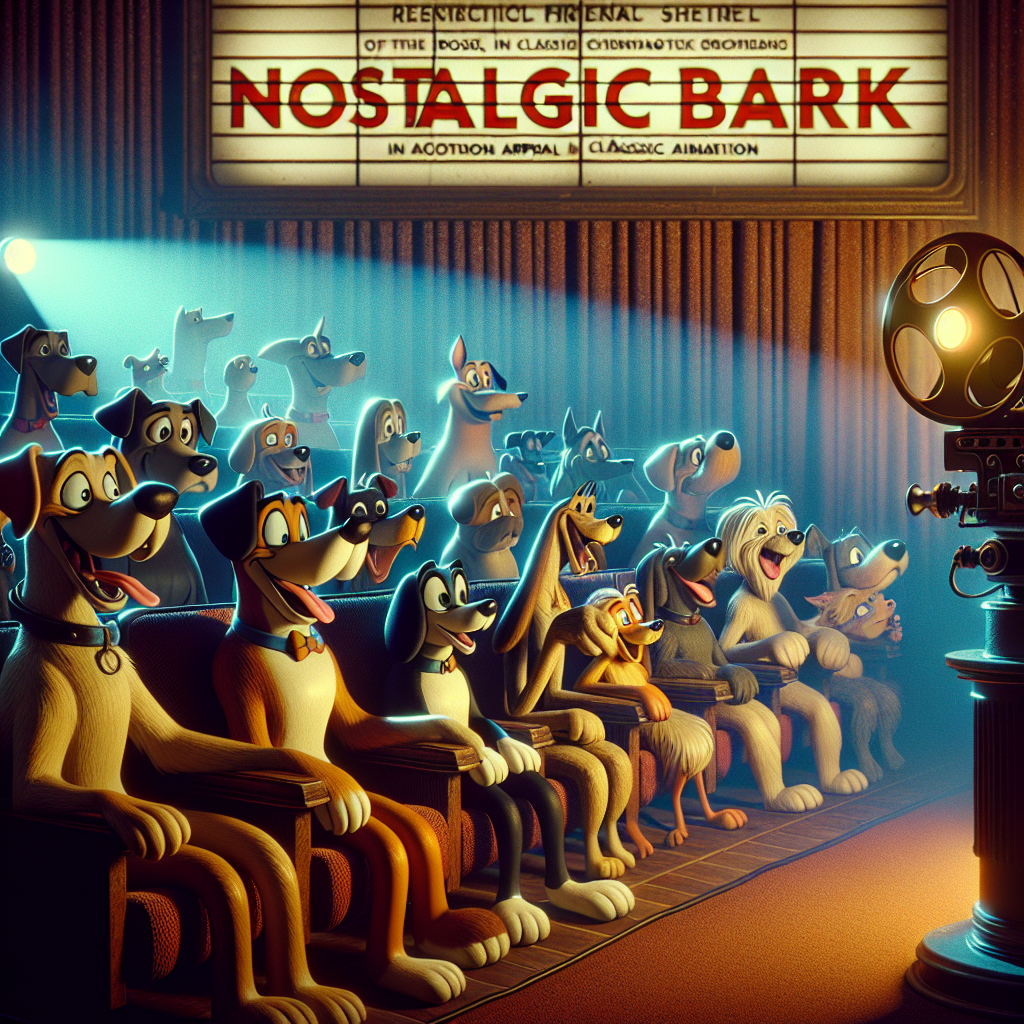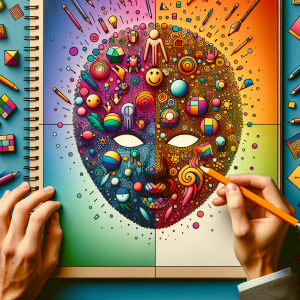Remember the days when your television screen was filled with bright colors, quirky characters, and a dash of mischief? As children, many of us became enchanted by the playful antics of furry friends who melted our hearts and filled our afternoons with laughter. Enter the world of cartoon dogs—those delightful, animated canines that not only entertained us but also left lasting impressions that resonate to this day. From the mischievous Scooby-Doo to the lovable Snoopy, these canine characters have a unique allure that speaks to our sense of nostalgia and shapes our perceptions of friendship, loyalty, and comedy.
The Golden Age of Animation: Where It All Began
The history of animation is rich and colorful, and it’s during the Golden Age of Animation—that magical period from the 1920s to the 1960s—where we first encountered a plethora of cartoon dogs that contributed significantly to this art form. This was when Studios like Warner Bros., Disney, and MGM unleashed their creative powers, introducing us to memorable canine characters that would become iconic in the realm of animated entertainment.
Character designs from this era were often vibrant and exaggerated, showcasing the fantastic worlds that they inhabited. Each dog brought with it unique traits and quirks that made them relatable, charming, and, of course, hilariously entertaining. Whether it was the lovable clumsiness of Pluto or the smooth, laid-back demeanor of Brian from “Family Guy,” cartoon dogs in classic animation created a space where audiences could laugh, cry, and share unforgettable moments.
Iconic Characters that Defined a Generation
Scooby-Doo: The Mystery-Solving Great Dane
Scooby-Doo, the main character from the franchise “Scooby-Doo, Where Are You!”, made his debut in 1969. This talking Great Dane captured the hearts of millions with his insatiable love for snacks, his comedic fearfulness, and his knack for solving mysteries alongside his human friends. Scooby is more than just a dog; he’s a symbol of camaraderie and the spirit of adventure. The series introduced themes of teamwork and friendship, making it a timeless classic that appeals to generations.
Snoopy: The World-Famous Beagle
Snoopy, the imaginative beagle from Charles Schulz’s “Peanuts,” has a unique charm that draws the audience into his whimsical world. Whether he’s daydreaming about flying a fighter plane or lounging atop his doghouse, Snoopy plays with the concept of dreams and aspirations that resonate with us all. The clever juxtaposition of his lively personality against the more somber themes of childhood encapsulates both humor and depth, making Snoopy one of the most beloved cartoon dogs ever.
Pluto: The Loyal Companion
While Mickey Mouse takes center stage in Disney’s universe, his faithful canine companion, Pluto, embodies the ultimate loyal friend. Unlike many of the anthropomorphic cartoon dogs, Pluto represents a more realistic dog. His adventures may be simple, but his expressions convey a range of emotions—joy, frustration, and love. Pluto’s charming antics showcase the unconditional affection dogs provide, reminding us of the special bond between humans and their furry friends.
The Influence of Cartoon Dogs on Pop Culture
Cartoon dogs have transcended the realm of animation to become pop culture icons. Their influence can be seen in various aspects of society, from merchandise and Halloween costumes to culinary products inspired by these beloved characters. The nostalgia associated with them strikes a chord with many adults who eagerly introduce their children to the characters they adored. This cross-generational love continues to promote the importance of these characters, proving that the magic of cartoon dogs is ageless.
The Role of Humor and Adventure
At the heart of every great cartoon dog is a blend of humor and adventure. These two elements not only create a light-hearted atmosphere but also serve as metaphors for the unpredictability of life. Watching a character stumble through one comedic scenario after another allows the audience to find joy in the chaos and see their shared experiences mirrored in the animated antics.
The adventures of cartoon dogs often encourage themes of problem-solving and teamwork. Whether they are escaping villains or uncovering clues, cartoon dogs teach valuable lessons about resilience and collaboration, instilling a sense of agency in their younger viewers, who in turn feel empowered to tackle their challenges with courage and humor.
Nostalgia and Our Love for Cartoon Dogs
Nostalgia plays a pivotal role in the enduring appreciation for cartoon dogs. For many adults, watching these shows often evokes happy memories connected to childhood—a time filled with innocence, joy, and discovery. Nostalgic programming has the power to transport us back to simpler times, and the comforting presence of cartoon dogs in our lives becomes a source of warmth and familiarity, helping to anchor us through life’s inevitable changes.
In today’s fast-paced digital world, this yearning for nostalgia has led to reboots, remakes, and revivals of classic dog-themed cartoons. Studios recognize the demand for familiar storytelling, breathing new life into beloved characters while maintaining the essence of what made them special in the first place. This evolution serves as both a tribute to their legacy and a way to introduce them to a new generation.
The Future of Cartoon Dogs in Animation
The future of cartoon dogs in animation is promising and continues to evolve. With advancements in animation technology and storytelling techniques, new characters are being developed while old favorites are revisited and revamped. Modern cartoon dogs are often designed to reflect contemporary sensibilities, tackling various issues ranging from environmentalism to emotional intelligence.
As we move forward, one thing remains certain: cartoon dogs will continue to embody our dreams, make us laugh, and remind us of the simple joys of life. The creative possibilities are endless, and as long as there is imagination, our favorite furry friends will live on in the hearts of audiences everywhere.
Final Thoughts: A Love Letter to Canine Companions
It’s clear that cartoon dogs have left a paw print on our collective consciousness. Their undeniable charm and timeless appeal reflect not just a love for animated characters but also our appreciation for the joy and comfort animals bring into our lives. As we celebrate these beloved figures in classic animation, let us remember the laughter, the lessons, and the love they’ve shared with us. So, whether you’re binge-watching old classics or introducing a new generation to these wonderful characters, enjoy the journey—because every nostalgic bark reminds us of the happiness these canine companions imparted, and continue to impart, in our lives.
Frequently Asked Questions (FAQs)
What made cartoon dogs popular in classic animation?
Cartoon dogs captured audiences with their humorous escapades, relatable personalities, and the unique bond they represented between dogs and humans. Their exaggerated traits and vibrant designs made them memorable characters in the hilarious landscapes of classic animation.
Which cartoon dog has had the most influence on pop culture?
Scooby-Doo stands out as one of the most influential cartoon dogs in pop culture. His blend of humor, adventure, and a knack for mystery-solving resonates with audiences, leading to numerous adaptations, merchandise, and references across various media.
How has nostalgia affected the portrayal of cartoon dogs over time?
Nostalgia has led to the revival of classic cartoon dogs, prompting remakes and merchandise that tap into childhood memories. New generations are introduced to these characters, often with updated designs or storylines that still maintain the fundamental charm that made them beloved in the first place.
Are there new cartoon dogs in modern animation?
Yes! Modern animation has introduced new canine characters like Gromit from “Wallace & Gromit” and Jake from “Adventure Time,” reflecting contemporary issues while retaining the humorous charm that has made cartoon dogs so endearing throughout the years.
Why are cartoon dogs significant in children’s programming?
Cartoon dogs often become relatable figures that embody friendship, loyalty, and humor. They introduce valuable lessons about teamwork, problem-solving, and emotional intelligence, serving as guides for young audiences as they navigate their own life experiences.








+ There are no comments
Add yours